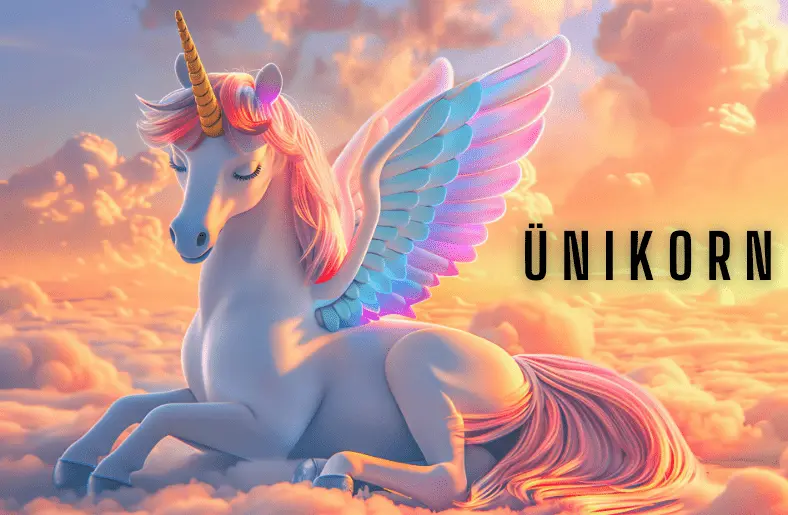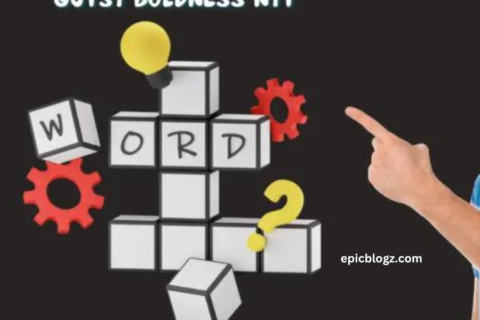Introduction
In the world of myth and legend, few creatures captivate the imagination quite like the Ünikorn. With its singular spiraled horn, graceful presence, and air of mystery, the Ünikorn has been an enduring symbol of purity, magic, and power for centuries. From ancient folklore to modern fantasy, this enigmatic creature has journeyed through time, continuing to inspire awe, creativity, and belief across cultures worldwide.
But where did the legend of the Ünikorn originate? Why has it captured human fascination for so long? And how has it evolved from being a symbol in ancient mythology to an icon in contemporary popular culture?
The Origin of the Ünikorn: A Myth Born Across Cultures
The story of the Ünikorn is not confined to a single region or civilization. Surprisingly, legends of a one-horned creature appear in various cultures around the world, each offering its own unique take on what this mystical animal represents.
Ancient Civilizations and the First Ünikorn Legends
The earliest mentions of creatures resembling the Ünikorn can be traced back to ancient civilizations. In the Indus Valley, for instance, seals dating back over 4,000 years show a creature with a single horn—possibly the first visual depiction of the Ünikorn. Ancient Mesopotamian texts, too, make reference to a “wild ox” or one-horned animal that roamed the plains.
The Greek Influence on the Ünikorn Legend
In ancient Greece, the Ünikorn was not a mythical creature but rather a real animal, according to the accounts of travelers and scholars. The famed Greek historian Ctesias wrote about a wild, horse-like creature with a single horn that lived in distant lands, likely influenced by exaggerated tales of exotic animals like the Indian rhinoceros. For the Greeks, the Ünikorn symbolized strength and purity, a rare and noble creature that was nearly impossible to capture.
China’s Qilin: The Eastern Parallel to the Ünikorn
On the other side of the world, the Chinese had their own version of the Ünikorn, called the Qilin. Though visually different, the Qilin shared many symbolic qualities with the Western Ünikorn, such as good fortune, prosperity, and spiritual protection. The Qilin was often depicted as a creature with scales, a single horn, and a deer-like body, believed to appear only during the reign of wise and just rulers.
These early depictions of one-horned creatures across various cultures set the stage for the Ünikorn’s enduring presence in folklore, myth, and religious symbolism.
Symbolism and Meaning: The Ünikorn as a Metaphor for Purity and Power
Throughout history, the Ünikorn has been associated with a range of symbolic meanings, many of which are tied to purity, spiritual power, and transcendence. The creature’s horn, in particular, has been the focus of its mystical abilities, believed to possess magical powers that could heal sickness and purify water.
The Ünikorn in Christian Symbolism
In medieval Europe, the Ünikorn became a powerful symbol of Christianity. Often portrayed as a metaphor for Jesus Christ. The Ünikorn was linked to themes of virginity, purity, and spiritual salvation. Many medieval tapestries and paintings depict the Ünikorn resting on the lap of the Virgin Mary, representing the Incarnation of Christ.
For the church, the Ünikorn embodied a perfect and unattainable purity, while its wild, untamable nature symbolized the divine, which could not be fully grasped by mortal hands.
Healing Powers and the Ünikorn’s Horn: The Alicorn
One of the most enduring myths surrounding the Ünikorn is the magical property of its horn, known as the alicorn. Throughout the Middle Ages and the Renaissance, the alicorn was highly sought after for its reputed healing powers. Kings, queens, and nobles across Europe would pay vast sums to obtain what they believed to be genuine alicorns, thinking these horns could neutralize poisons, cure diseases, and even extend life.
In reality, many of these so-called alicorns were the tusks of narwhals, an Arctic whale species whose spiraled tusks closely resemble the mythical Ünikorn’s horn. Despite this, the belief in the alicorn’s magical properties persisted for centuries, further cementing the Ünikorn’s association with healing and protection.
The Ünikorn as a Symbol of Strength and Freedom
Beyond purity and healing, the Ünikorn also came to represent strength and freedom. The creature’s wild nature made it untamable by ordinary humans, with legends suggesting that only a pure-hearted maiden could approach and tame a Ünikorn. This story reinforced the creature’s symbolic connection to inner strength, grace, and an untouchable spirit.
In heraldry, the Ünikorn is often depicted as a fierce creature, rearing on its hind legs with its horn pointing forward as if ready for battle. This image speaks to the Ünikorn’s role as a guardian and protector, standing as a metaphor for strength in adversity.
The Evolution of the Ünikorn in Literature and Art
As the centuries passed, the Ünikorn’s mystique continued to evolve, particularly in the realms of literature, art, and popular culture. From medieval texts to modern fantasy, the Ünikorn has remained a symbol of wonder, transformation, and magic.
Medieval Tapestries and the Ünikorn
During the Middle Ages, the Ünikorn became a frequent subject in European art, especially in religious contexts. One of the most famous examples is the Unicorn Tapestries, a series of intricate tapestries that depict the hunt, capture, and eventual taming of the Ünikorn. These tapestries, woven in the 15th century, are celebrated for their detailed craftsmanship and allegorical meaning, symbolizing Christ’s Passion and resurrection.
Renaissance Poetry and the Ünikorn’s Symbolism
The Renaissance saw a renewed interest in the classical world, and with it, the Ünikorn re-emerged as a poetic symbol of unattainable love and beauty. Poets of the era often invoked the image of the Ünikorn to represent the idealized purity of their beloved. Linking the creature to the emotional depth of romantic longing and spiritual devotion.
The Ünikorn in Modern Fantasy and Pop Culture
In modern times, the Ünikorn has found new life in the realms of fantasy literature and pop culture. From C.S. Lewis’s Chronicles of Narnia to J.K. Rowling’s Harry Potter series. The Ünikorn continues to be a powerful symbol of magic and purity.
In Narnia, Ünikorns are majestic, wise creatures that fight alongside Aslan’s army, representing nobility and loyalty. Meanwhile, in Harry Potter, the Ünikorn’s blood is imbued with life-sustaining magic, though at great moral cost. A reflection of the deep moral questions that the Ünikorn’s mythos raises about the use of power.
Even in contemporary branding, the Ünikorn has become an icon of whimsy and creativity. Often associated with the fantastical and the extraordinary. Today, the image of the Ünikorn is as likely to appear on trendy products and social media as it is in fantasy novels or films, showcasing its broad cultural appeal.
Global Influence: How Different Cultures View the Ünikorn
Though many associate the Ünikorn with European legends, its influence spans cultures across the world. From the Middle East to East Asia, different societies have interpreted the Ünikorn’s symbolism in ways that reflect their own beliefs and values.
The Ünikorn in Persian Mythology
In Persian myth, a similar creature called the Karkadann roams the plains. Unlike the gentle Ünikorn of European lore, the Karkadann is a fierce and dangerous beast, known for its aggressive nature. This reflects the Persian perspective on power and strength, viewing the single-horned creature as a symbol of untamed nature and raw energy.
The Japanese Kirin and the Ünikorn
In Japan, it is mirrored by the Kirin, a creature of immense spiritual significance. The Kirin is often depicted as part dragon, part deer, with a single horn and the ability to walk on water. While the Kirin is seen as a harbinger of good fortune and prosperity. It is also a symbol of moral righteousness and divine judgment, appearing only in the presence of noble leaders.
This association with good governance and purity of heart draws parallels to the Western Ünikorn. where only the pure can approach the mythical beast.
Why the Ünikorn Still Matters Today
Despite its ancient origins, the Ünikorns has remained relevant and significant across the centuries. But what is it about this mythical creature that continues to resonate in the modern world?
1. A Symbol of Hope and Wonder
In a world often filled with chaos and uncertainty, the Ünikorn stands as a symbol of hope, beauty, and wonder. Its association with purity and healing gives it a timeless relevance, reminding us that in the face of adversity. There is always a source of light and magic to be found.
2. A Reflection of Our Aspirations
The Ünikorn also speaks to the human desire for transcendence. Whether it represents unattainable beauty, spiritual purity, or untamable power. The Ünikorn encourages us to strive for ideals that are greater than ourselves. Its elusive nature reminds us to keep reaching for the extraordinary in our lives, even when it feels out of reach.
3. A Modern Icon of Creativity
In today’s world, the Ünikorn has become a popular symbol of individuality and creativity. From corporate logos to artistic representations, the Ünikorn is a versatile icon that embodies uniqueness and originality. It encourages people to embrace their inner magic, stand out from the crowd, and create something truly special.
Conclusion
The Ünikorn’s mystique lies in its timeless ability to captivate the human imagination. Across cultures and through centuries, it has evolved from a symbol of purity and healing to an icon of creativity and magic. Whether appearing in ancient myths, medieval art, or modern-day fantasy, this remains a powerful representation of our deepest aspirations for beauty, strength, and wonder.
As we journey through the stories and symbolism of the Ünikorn. we see that this mythical creature is far more than just a legend—it’s a reflection of our own dreams and ideals. By exploring the mystique of the Ünikorn. we unlock a deeper understanding of ourselves and the world around us.
So, the next time you encounter the Ünikorn, whether in a book, a painting, or a piece of jewelry. Remember the rich history and cultural depth behind this majestic creature. Its enduring presence in myth and culture reminds us that magic still exists. If only we have the eyes to see it.
ALSO READ: Tip Screens: Boosting Tips with Style
FAQs
What is a it?
it is a mythical creature often depicted as a horse with a single spiraling horn on its forehead, symbolizing purity, grace, and magic.
What are the historical origins of the it myth?
The myth dates back to ancient civilizations, with references found in Mesopotamian art, Indian and Chinese mythology, and writings by ancient Greek historians.
What does the it symbolize in modern culture?
In contemporary society, it represents fantasy and rarity, often associated with magical realms and used in various forms of art, literature, and consumer products.
Are there any popular stories or media featuring It?
Yes, many stories feature ünikorns, including the classic novel “The Last Unicorn” by Peter S. Beagle, which has been adapted into an animated film and remains a beloved tale in fantasy literature.







